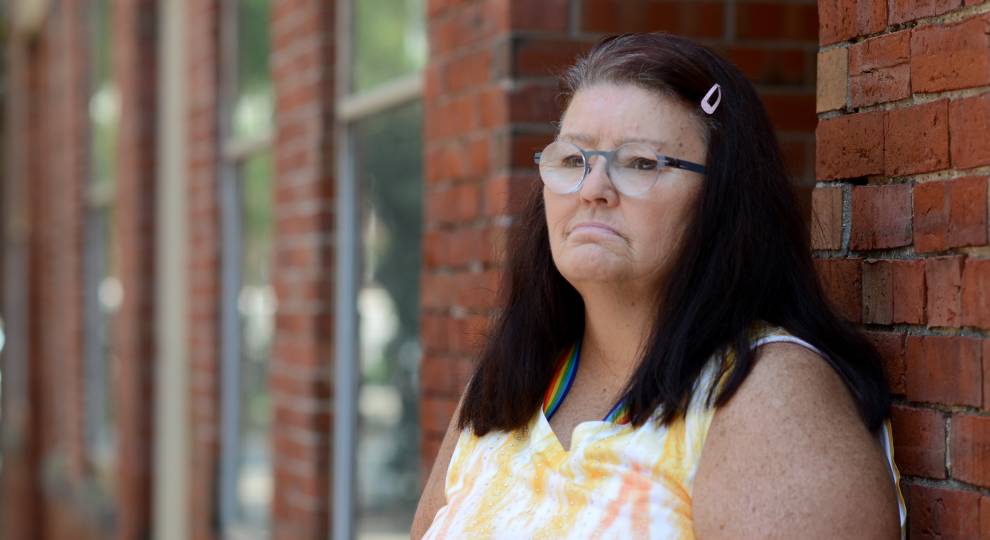Home And Work Lives Have Changed Dramatically For Americans With Disabilities. Some Say There’s More Work To Be Done.

At age five, Donna Jay was sent to live in an institutional setting for people with intellectual and developmental disabilities. But now, at age 65, she lives independently in a condo in Salem, Mass. (Meredith Nierman/GBH News)
When Donna Jay was just five years old, she says a doctor told her parents that she had to leave home and live in an institution.
“The doctor said, ‘You can’t take care of her. She’s not going to be able to walk, talk, read. Or anything.’ So, they said: ‘Okay,’” Jay recalled.
She ended up living in several institutions designated for people with intellectual and developmental disabilities, and she hated it. She says there was a litany of problems, including rampant cockroaches and being forced to take group showers.
“No privacy. No door. No nothing. Everybody had to shower together. I didn’t like that,” Jay said of her time — now many decades ago — at Hogan Regional Center in Danvers, Mass.
Jay eventually moved to a small group home. And now, at age 65, she lives independently in a condo in Salem, Mass., and is finally happy with the spot she calls home. “I’m in a good place,” she said.
Jay’s path from living in an institution to living in the community follows a national trend.
